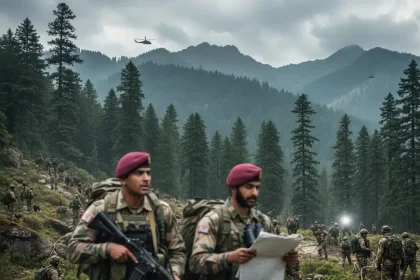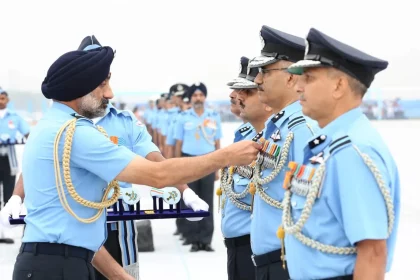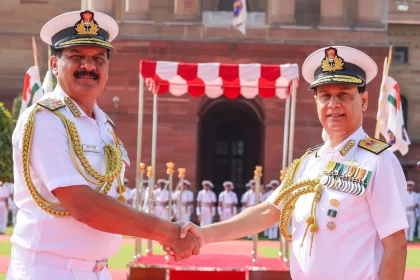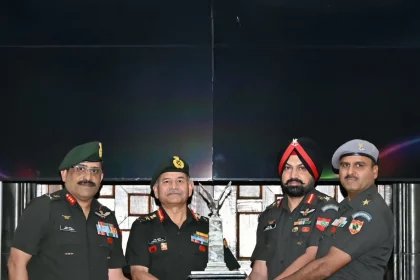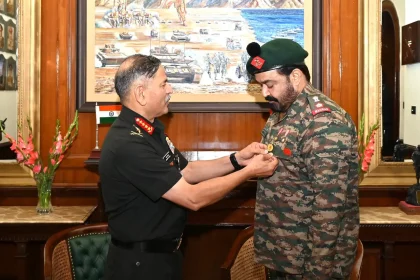Two Indian Army Paratroopers Missing in Kokernag Amid Anti-Terror Operation; Massive Search Launched
Two Army Paratroopers Missing in Kokernag During Anti-Terror Operation; Massive Search Underway.
Pakistan to Receive Advanced US Air-to-Air Missiles Amid Warming Ties After Trump–Asim Munir Meet
Pakistan to Get Advanced US AIM-120 Missiles After Trump–Asim Munir Meeting, Signalling Defence Ties Reset.
93rd Indian Air Force Day Celebrated at Hindon Airbase, Spotlight on Operation Sindoor
93rd Indian Air Force Day Celebrated at Hindon Airbase, Operation Sindoor Takes Center Stage.
Vice Admiral Ajay Kochhar Meets Admiral Dinesh K Tripathi in New Delhi
Vice Admiral Ajay Kochhar met CNS Admiral Dinesh K Tripathi in New Delhi to discuss operational readiness, maritime security, and…
667 Army Aviation Squadron and 207 Army Aviation Squadron Win Prestigious COAS Flight Safety Trophy
667 Army Aviation Squadron (R&O) emerged as the winner in the single-engine category, while 207 Army Aviation Squadron (UH) claimed…
Army Chief Felicitates Lt Col (Honorary) Mohanlal for His Contribution to Nation-Building and Support to Armed Forces
The Army Chief lauded the veteran actor for his enduring association with the Armed Forces and his efforts to inspire…

